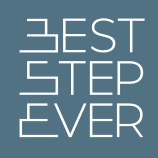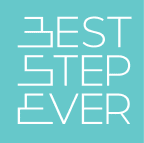Soft skills for 2022 that you need!
A new way of working requires a skills upgrade, especially soft skills for 2022.
The global pandemic changed the workplace as we know it and we had to learn to do things differently, fast. What are the implications of this dramatic change for the soft skills that employers need from their workforce? Let’s rather call them power skills, a label Josh Bersin promotes. Because they’re anything but soft.
Spoiler alert: many of the critical skills of the past continue to be the key skills of the future – but with a twist.
As we adjust to a new way of working, employers need a wider set of skills that embrace digital connection as a standard way of working. All that stuff we needed previously in the workplace is now needed online, too -and that calls for some super-powers.
These are the four aspects that I hear and read employers discussing the most:
- Adaptability – to anticipate and adjust to change in a positive way.
- Compelling communication – to connect clearly and effectively across the digital divide.
- Emotional intelligence – using key interpersonal skills to stay human in a virtual world.
- Self-driven learning – remaining relevant through ongoing upskilling
Does this resonate with you? Are you facing the same needs?
Let’s dive into these in turn.
1. ADAPTABILITY
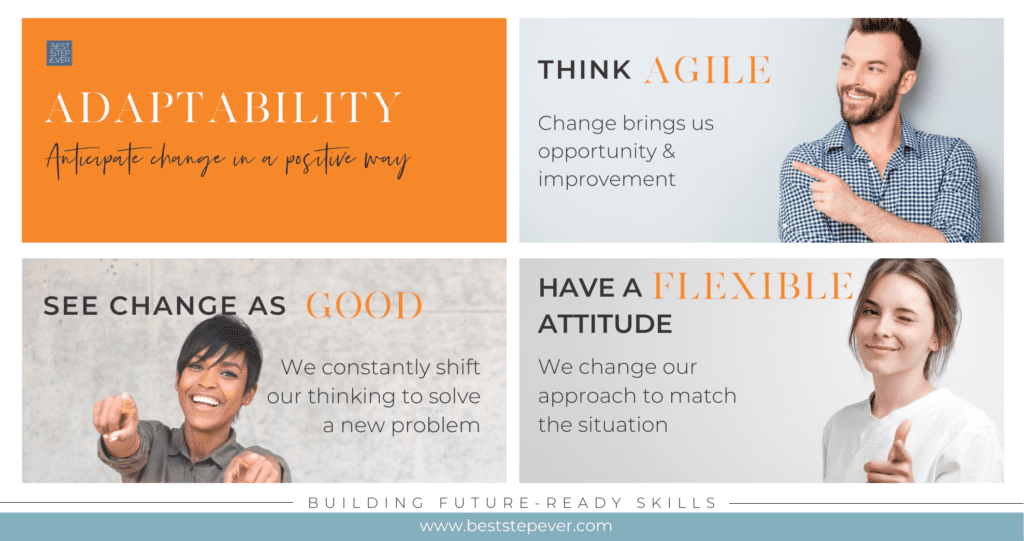
Nothing like a good old pandemic to shake things up and test our change-worthiness to the core!
Mental health issues flared as people struggled to cope with huge changes and restrictions in their environment. Even the most resilient amongst us felt lost and depressed at times.
We became painfully aware that our world can be rocked by events we have no control over. However, what we can attempt to control is how we react to these changes.
And this made the skill of adaptability so much more valuable than ever before.
Let’s unpack three aspects that are essential for the new world of work we find ourselves in.
- a) See change as good
People who view change in a constructive way, or who have the skill to shift their mindset from negative to positive, are extremely valuable in the workplace. Apart from their ability to see difficult times through, they also help to calm or stabilize others.
Yes, yes, we all know we should view “problems” as “opportunities”, blah blah. Easier said than done! It’s a fundamental mindset shift.
But this is something deeper. It’s more about saying to oneself “I don’t know what’s going to happen tomorrow, but I know I have the strength to cope with what comes my way”.
And for organizations it’s the same mindset. Does your workplace respond quickly and constructively to changes? Or is the prevailing culture risk-averse? Does it hold people back and encourage them to keep doing what they’ve always done?
What can employers do to encourage a mindset (and culture) of responding positively to change?
The answer lies in examining the consequences of change. Are the outcomes of change positive or negative for the people that work there? Is there an excitement about change, or does it add to the stress? And how does the top team communicate around change?
If change (mostly) brings positive benefits to everyone in the organization, then attitudes around change will be positive.
If you’re encountering much resistance and negativity around change, it’s useful to ask yourself, “Is the impact of this change negative or positive to those who experience it most?”. If the answer is negative, then structural adjustments need to be made to introduce the WIFM – What’s In It for Me?
- b) Think agile
A fast-moving collaborative approach to software development gave rise to the term agile programming. This term has since flourished to become, well, agile everything.
So what is agile thinking? It’s the ability to adjust and change as the situation demands it, rather than sticking to a well-defined plan. It’s highly effective in situations where we need a rapid response to unexpected events.
It’s also a highly effective way of learning by trail and error. If it works, you carry on. If not, you try something else.
Truly agile minds have superb problem-solving abilities. Can’t go over the obstacle? Well, let’s try and go under it. Beside it. Through it. Let’s hire a crane and swing in the air above it. Agile thinking by it’s very nature requires an “out of the box”, no-holds-barred mentality.
Can anyone become an agile thinker? Well, some of us find it easier to think this way than others. And there are ways to encourage a lateral-thinking mindset. However, a lot also has to do with an enabling environment.
Agile thinking flourishes best in a relaxed, risk-tolerant, creative environment.
Asking employees to “think agile” in a bureaucratic, rule-bound, risk-averse organization is not going to work. No matter how much management wants to believe it.
So the smarter question to ask is, “Is our organization capable of encouraging and enabling agile thinking?”.
- c) Flexible attitude
Flexibility is different to agility.
Agility is generally a response to unexpected or unforeseen events. Flexibility on the other hand relates to short-term changes in the environment which were deemed possible but not probable.
Examples where we need flexibility are a changing deadline, or added customer requirements, or scope creep in a project. Although these expectations weren’t present at the beginning of the event, nevertheless they present themselves over time.
The pandemic has required us to become more flexible in adjusting to different situations and ways of working. Some employees have struggled with this more than others.
Many employers report that they are putting more emphasis on recruiting staff who are flexible and adaptable. It’s become an important recruitment criterion.
Sometimes we need to work with what we have, and a flexible attitude can be built.
Often the key component of helping people embrace change is context. If we understand the details i.e. the what, when, where and how of the upcoming change, it becomes a lot more palatable. Providing positive acknowledgement of resilience and adaptability helps bed down positive attitudes to being flexible.
Some people just have inflexible personalities. They are mostly resistant to change, somewhat rigid in approach, not very open to new ideas or approaches and may get defensive when their established way of working is being threatened.
Strategies for building successful working relationships with less flexible people include:
- - Providing clear explanations and business rationale about what change is needed and why.
- - Communicating upfront and as soon as possible about potential changes in order to allow them to become familiar with what’s expected.
- - Explaining early and often that some rules and procedures are unlikely to ever change but that others may be adjusted regularly.
- - Being open to listening to and addressing concerns.
- - Allocating them to tasks which are less likely to require flexibility.
These three aspects of adaptability – seeing change as positive, thinking agile, and having a flexible attitude – are increasingly important in navigating the demands of a post-pandemic new world of work.
2. COMPELLING COMMUNICATION
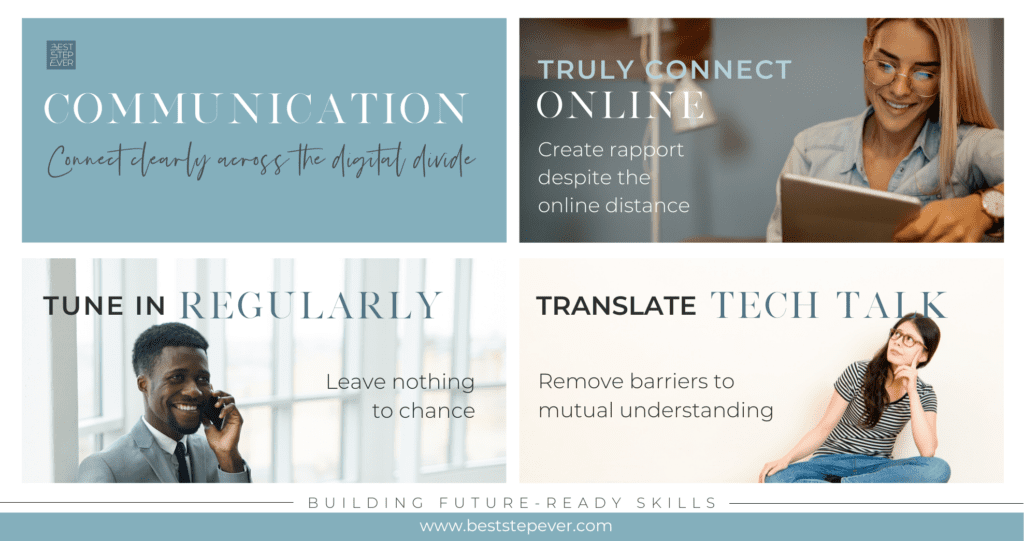
Noticed a change in your own communication style? Chances are you’ve had to adapt and change to a world that’s increasingly online and digitized.
Communicating via Zoom, Google Meet, Microsoft Teams or any other meeting software requires different skills. Non-verbal signals are now largely 2-dimensional and it’s easy to miss subtle nuances of behaviour that were much easier to pick up face-to-face.
Not only our communication skills but also our technical skills require sharpening. And because we’re using more and more online tools to connect and work with each other, we need to become masters of diverse technologies. And we need to explain their benefits and impact in a way that’s understandable.
Three aspects of communication have become increasingly relevant as we work online.
- a) Truly connect online
Creating rapport through the barrier of technology is something very novel for most of us.
How do we connect in a genuine and authentic way through the virtual veil? How do we connect as human to human without touch or being in the same physical space at the same time?
This is a new skill. Two years ago, it wasn’t even remotely on the radar of desirable employee traits. And now it’s up there as a critical competency. Employees and leaders who do this well are far more likely to achieve strong results.
Research conducted in the early days of the pandemic indicated that 43% of respondents used text messaging more often, followed by an increase in voice calls (36%), social media (35%) and video calls (30%).
Some aspects of creating a powerful connection online include:
- - taking the time to get to truly know the other person;
- - sharing aspects of your personality;
- - encouraging small talk;
- - speaking up;
- - showing you’re listening;
- - personalizing your online presence;
- - doing your research about the other party;
- - being yourself;
- - using technology effectively.
Forward-thinking organizations are adjusting their internal communication programs to cover topics such as communicating effectively online or building virtual relationships.
- b) Tune in regularly
When we’re in an office, we frequently meet other people informally. When we’re working largely online, these chance encounters disappear.
And out of sight is out of mind.
When we don’t have a system of connecting with others on a regular basis, we can make others feel insignificant and forgotten. And we can feel the same ourselves.
Effective communication in a virtual world requires us to make extra effort. We consciously have to touch sides with significant others. We have to formally schedule this in where-as before it was done unconsciously.
It’s now increasingly difficult to “catch the ear” of some-one informally whom you know can influence the course of events. In some ways the digital world has levelled the playing field.
Leaders in particular need to pay attention to ensuring that all their direct reports get airtime sufficient to their needs. Effective managers now build this into their daily online activities – because the strategy of walking around has been severely curtailed.
The skill of making regular contact and using technology to do this effectively requires dedicated planning and execution.
- c) Translate tech talk
Our BI is telling us that our SEO and data analytics are sub-optimal; therefore, our Saas solution is not being seen. At the same time our UX is inadequate and there’s increased pressure to add AI and VR to our stack.
Huh?
Let’s translate that, shall we?
Our business intelligence system is telling us that our search engine optimization and data analytics (on our website) are sub-optimal; therefore, our software-as-a-service solution is not being seen. At the same time our user experience is inadequate and there’s increased pressure to add artificial intelligence and virtual reality to our software offering.
Have you ever been on the receiving end of this type of conversation? Perhaps you pretended you understood the terms because you didn’t want to seem like an ignorant dinosaur.
But you felt the barrier. Others are “in the know” and you aren’t. Which means you’re unable to contribute to the conversation.
In my first job I worked with many actuaries. Generally, they had tons of IQ but not much EQ. The rare beings that possessed both were paid a stratospheric salary as a marketing actuary – because they had the rare gift of conveying complex concepts to clients in a way that got the message across.
And it’s become the same in our technology-driven world. People who bring others along with them in understanding, appreciating, and applying technology effectively are becoming increasingly valued.
On a more elementary level, the mere skill of explaining to some-one how to share their screen online or schedule a multi-party meeting effectively has become a basic job requirement.
Translating tech talk is a skill that can be taught. It requires putting oneself into the shoes of others, simplifying concepts and using many examples. It’s a skill that’s becoming increasingly valued by employers.
Workplaces where staff have the skills to build work relationships online, keep in regular contact and explain technological advances in a way that brings others with them have a huge productivity advantage. They do things faster and more cohesively.
3. EMOTIONAL INTELLIGENCE
Demonstrating emotional intelligence skills online requires deeper levels of competence than before. So, if EI skills were lacking in your workplace before the pandemic, chances are you’re feeling even more pain now.
Doing things online increases the likelihood of misunderstandings, conflict, alienation, and errors. All these are difficult to fix online which compounds the problem.
Below I’ve highlighted three aspects of emotional intelligence that require special attention in a digital world.
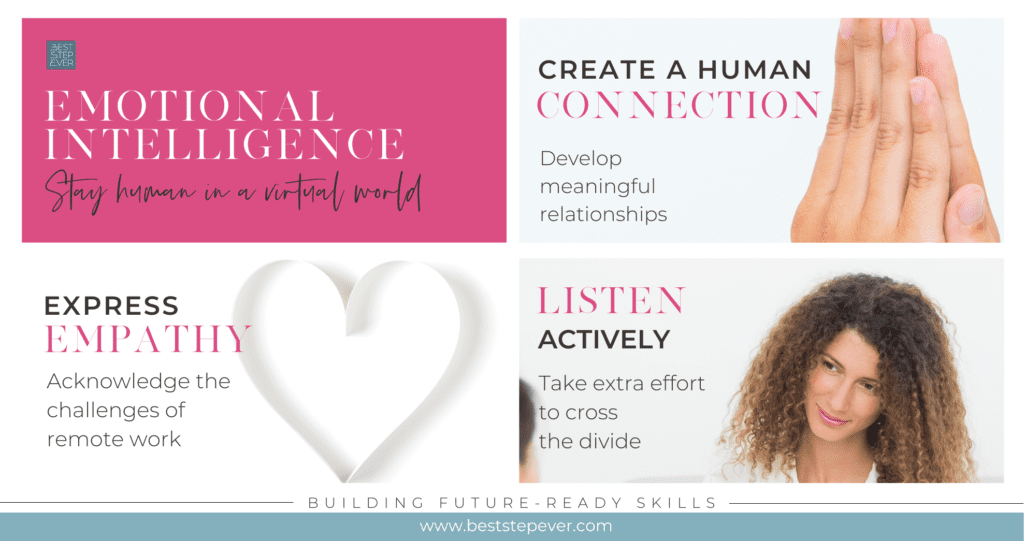
- a) Create a human connection
Seems like a distant memory, doesn’t it? Those workplace relationships built face-to-face in a building that housed employees five days a week. Casual chats around the watercooler. Checking in with your “work spouse”.
Instead, employees are expected to build relationships and participate in team activities largely online. Post-pandemic, many employers are endorsing more flexible work practices.
The implication is that we need to be competent not only at building face-to-face relationships but also at developing online relationships. Often with more than one person at a time. And for those of us leading teams, this ability is emerging as a fundamental leadership requirement.
Solid working relationships need a genuine connection. Not just a casual online conversation or the veneer of shared priorities. It requires getting to know each other, identifying shared values and concerns, reciprocity, and mutual care – mostly done over an impersonal phone or screen.
Building these relationships in a virtual world requires a special skill. It’s about having to do more, with less.
The most important point of contact that an employee has with the organization is through their line manager. If this relationship does not work well, it strongly increases the likelihood of employee turnover. It follows that it becomes even more essential that line managers are able to build and maintain relationships effectively online.
Employers are actively seeking to increase the skill level of their line managers in this regard to ensure that employees are adequately nurtured and supported through the employee lifecycle.
- b) Express empathy
The BusinessSolver organization conducts annual research into workplace empathy. Their most recent survey, The 2021 State of Workplace Empathy Executive Summary, provides the following data:
- - Only 1 in 4 employees believe empathy in their organization is sufficient.
- - 7 out of 10 CEO’s say it’s hard for them to consistently demonstrate empathy at work.
- - 84% of CEO’s and70% of employees believe empathy drives better business outcomes
Spot the problem?
Employee stress during the pandemic increased greatly, due to myriad factors such as health concerns for themselves and people close to them, financial pressures, isolation, uncertainty about the future, juggling home and work responsibilities, as well as coping with increased technological demands
During the pandemic employees have needed support and understanding from their organizations, backed up by tangible action. These actions include
- - providing mental health support;
- - transparent communication;
- - supportive managers;
- - flexible work schedules;
- - accommodating work from home practices.
This article from Nick Wignall about the four habits of emotionally savvy leaders is a powerful read.
Workplaces that are empathetic and provide targeted interventions to support employee health and wellbeing have a competitive advantage in retaining valued staff. It’s high time that more resources are applied to developing empathy skills at all levels in the organization.
- c) Listen actively
Admit it. When you’re interacting with some-one via a screen in your home office, it’s easy to give in to distractions. Perhaps you’re reading or doing work on a second screen. Perhaps you’re busy on your phone in your lap. Perhaps you’ve even gone so far as to substitute a video of yourself on loop whilst you do more interesting stuff in another room. Check Tiktok to see how that’s done!
Acting on distractions is much easier to get away with than if you’re being eyeballed by some-one across the table in a meeting room.
And that all adds to the attention deficit.
Yet what’s needed is the exact opposite. More effort is needed to bridge the barrier that technology puts up between us. So instead of paying less attention, we should be paying so much more. We should be showing that we’re listening by minimal encouragers (“aha”, “I see”), nodding agreement, asking questions, and paraphrasing key points.
All these actions show that we are engaged and supportive of the interaction. And that leads to higher levels of engagement and trust.
The three strategies above – creating a human connection, expressing empathy and active listening – help bridge the chasm that online work creates. They build trust and reduce unnecessary conflict and misunderstandings.
And aren’t they part of the essential qualities of a great leader?
4. SELF-DRIVEN LEARNING
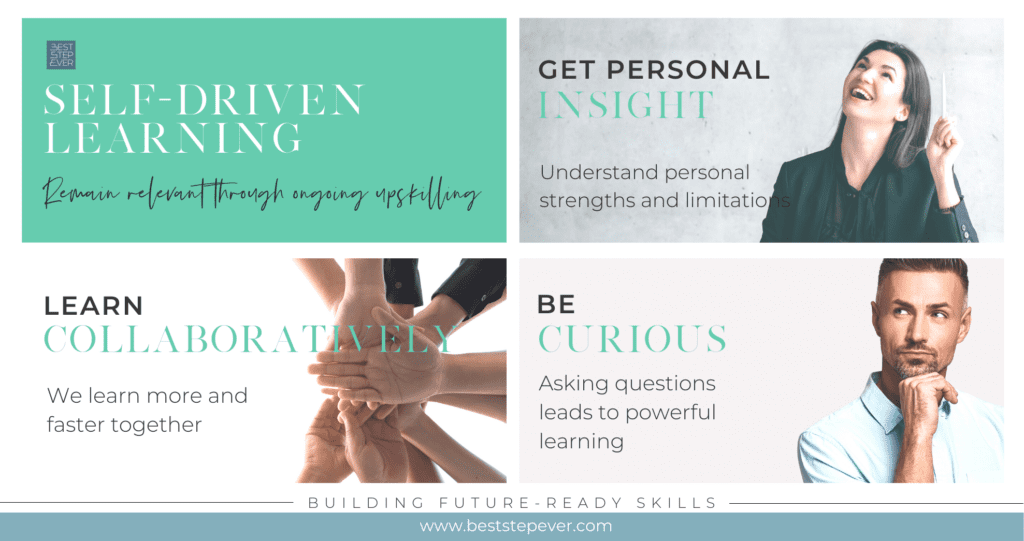
Continuous learning happens at great companies. They employ highly motivated staff who drive their own personal development and learning agenda. These staff want to stay relevant and on top of the latest developments – so they upskill on an ongoing basis.
Here’s the thing, though. These intrinsically motivated learners aren’t waiting around for you to determine their learning agenda. They know what they want, and they want it now. If you don’t supply it, they’ll find it somewhere else – either inside or outside your employ.
Cue left for the Great Resignation!
So, what’s important to these learners on a mission? And how do you spot them?
Continuous learning happens at great companies. They employ highly motivated staff who drive their own personal development and learning agenda. These staff want to stay relevant and on top of the latest developments – so they upskill on an ongoing basis.
Here’s the thing, though. These intrinsically motivated learners aren’t waiting around for you to determine their learning agenda. They know what they want, and they want it now. If you don’t supply it, they’ll find it somewhere else – either inside or outside your employ.
Cue left for the Great Resignation!
So, what’s important to these learners on a mission? And how do you spot them?
- a) Get personal insight
All good learning starts with personal insight.
Most self-driven learners are hungry for insights into themselves – because it allows them to calibrate their strengths with their chosen career path.
Typical questions self-driven learners ask themselves are: What am I good at? What is it worth investing my time in to improve? What will give me the biggest bang for buck? What will enhance my career prospects?
The starting point to effective personal development initiatives is personal insight. We need to understand our strengths, skills, preferences, and values to build on them. And to create a unique learning path that aligns with our personal goals.
At BestStepEver we provide an online future-focused soft skills solution to support the people aspect of change management. The first stage of our career roadmap we call “Dig Deep” – because that’s where we encourage members to get powerful insights into their own strengths and to capitalize on those. And that sets the stage for all the future-ready skills that follow.
Providing personal insights and linking these to self-designed career pathways is an attractive formula to your self-driven learners. As well as for the learners who are not yet fully self-driven but who will respond positively to the organization’s investment in their future.
b) Learn collaboratively
Employers are looking for people with the skill to learn collaboratively. Because they know it speeds up the learning process.
The increased complexity of our environment means that we can’t know everything about everything. We need to learn just enough from others who have immersed themselves more deeply.
So, what are some characteristics of people who are smart at collaborative learning?
- - They know how to spot who knows more than they do in their chosen domain.
- - They’re good networkers – because they like to keep up to date with who knows what. They know that in today’s technologically advanced world knowledge changes all the time.
- - They’re really good at asking the right questions at the right time.
- - They don’t waste time learning stuff that won’t benefit them right now.
- As employers, how can we speed up the upskilling process amongst our workforce? Here are some simple steps:
- - Communicate clearly who knows what and whether they’re wiling to share.
- - Encourage people to ask questions and learn from each other.
- - Create both formal and informal opportunities for people to connect and learn from each other.
- c) Be curious
How can you spot a self-driven learner a mile away? It’s simple. They’re the ones asking questions. Lots of questions. And they don’t stop asking until they get the information and insights they’re looking for.
Simply put, they’re curious. But curious about specific things that will benefit them. And they know that being curious about the right things, and asking the right questions of the right people, accelerates their learning.
Employers will do well to look for curiosity amongst existing and future employees as a measure for who’s most motivated to learn and adopt new ways.
Self-driven learners are motivated by personal insights, they understand the benefits of collaborative learning and they are insatiably curious. Employers who provide plenty of learning opportunities, both formal and informal, can expect to reap the benefits.
IN CONCLUSION
Four top skills profiles that employers value highly in 2022 are
Adaptable innovators – because change is a constant and we need people on board who view change as positive
Compelling communicators – who are able to connect clearly across the digital divide
Emotionally intelligent leaders – capable and competent to build strong relationships in a virtual world
Self-driven learners – who stay relevant by constantly upskilling themselves
Building a strong and resilient organization relies on having a workforce that ticks these boxes.
If you conducted a skills gap assessment right now in your company against these profiles, what would the results look like?
